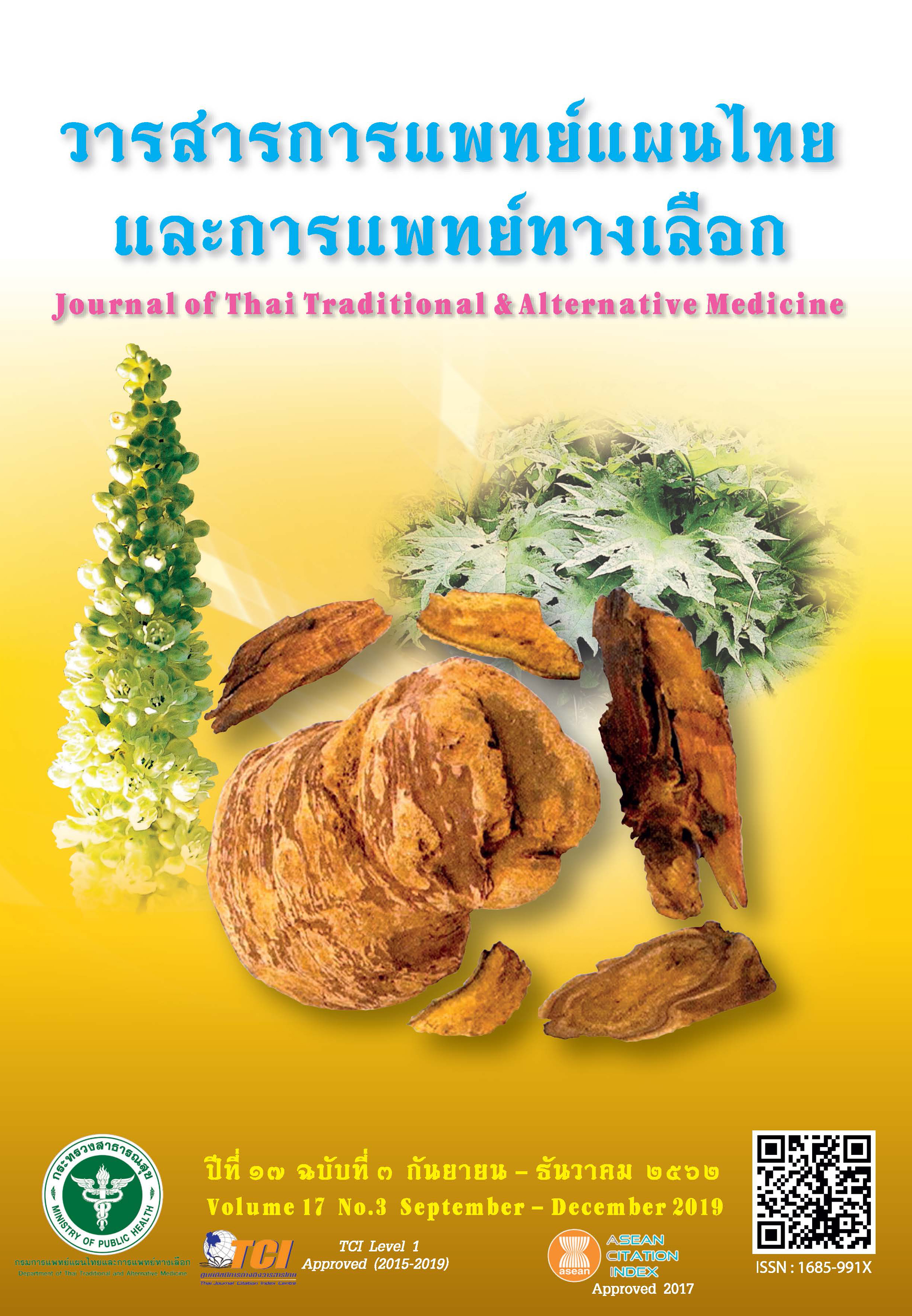Study of Eucalyptus Oil Balm is Distilled by Thermosyphon
Main Article Content
Abstract
This study aims to examine the extraction of essential oils from eucalyptus with a refined technique, Thermosyphon, for the use in Thai traditional medicine. The findings from the eucalyptus essential oil distillation techniques refined by Thermosyphon found only 1,8-Cineole substances with 50.45 percent, which compares to 95.69 percent eucalyptus oil is sold in the market, Which 1,8-Cineole is enough to applied Thai medical product, eucalyptus balm. The stability condition and satisfactory of the balsam was tested by Thai students of various medical disciplines. It was found that the short-term stability and satisfactory tests caused a semi-rigid manner, small sediment layers, and slightly changed colour and aroma. The stability condition and color were different. Physical tests according to the actual conditions found that the eucalyptus balm had a slightly changed color and odor after being stored for 30 days. When applied on skin, There was medium absorption, no irritation and medium wipe-out. The stability of the color and aroma vary, including measuring the patients’ satisfaction of the eucalyptus balm. The sample has the satisfaction level eucalyptus balm scent satisfaction levels. The average balsam of 3.56, the color was moderate average of 3.46 and the heat of viscous eucalyptus balm was moderate, Which was average of 3.39 including data analysis of the feeling was found that the samples feel relaxed was moderate with 64.80 percent.
Article Details
References
2. Angsuthon Ch, Tantayanon R, Buraphachip S. Balm (dissertation). faculty of Commerce and Accountancy. Bangkok: Thammasat University; 1999. (in Thai)
3. Nampon P, Sannawhat T, and Somporn H. Thermosyphon essential oil distillation machine, The 9th National Symposium on Research on September 12-13, 2013, Muang District, Mahasarakham Province. (in Thai)
4. Sitthikityothin P. Quality assessment of Thai wax supplemented with herbs. Academic journal university of the Thai Chamber of Commerce. 2008;28(3):115-20. (in Thai)
5. Srisa-ard B. Criteria for satisfaction assessment. Chiang
Mai Medical Journal. 2002;29(3):66-7. (in Thai)

